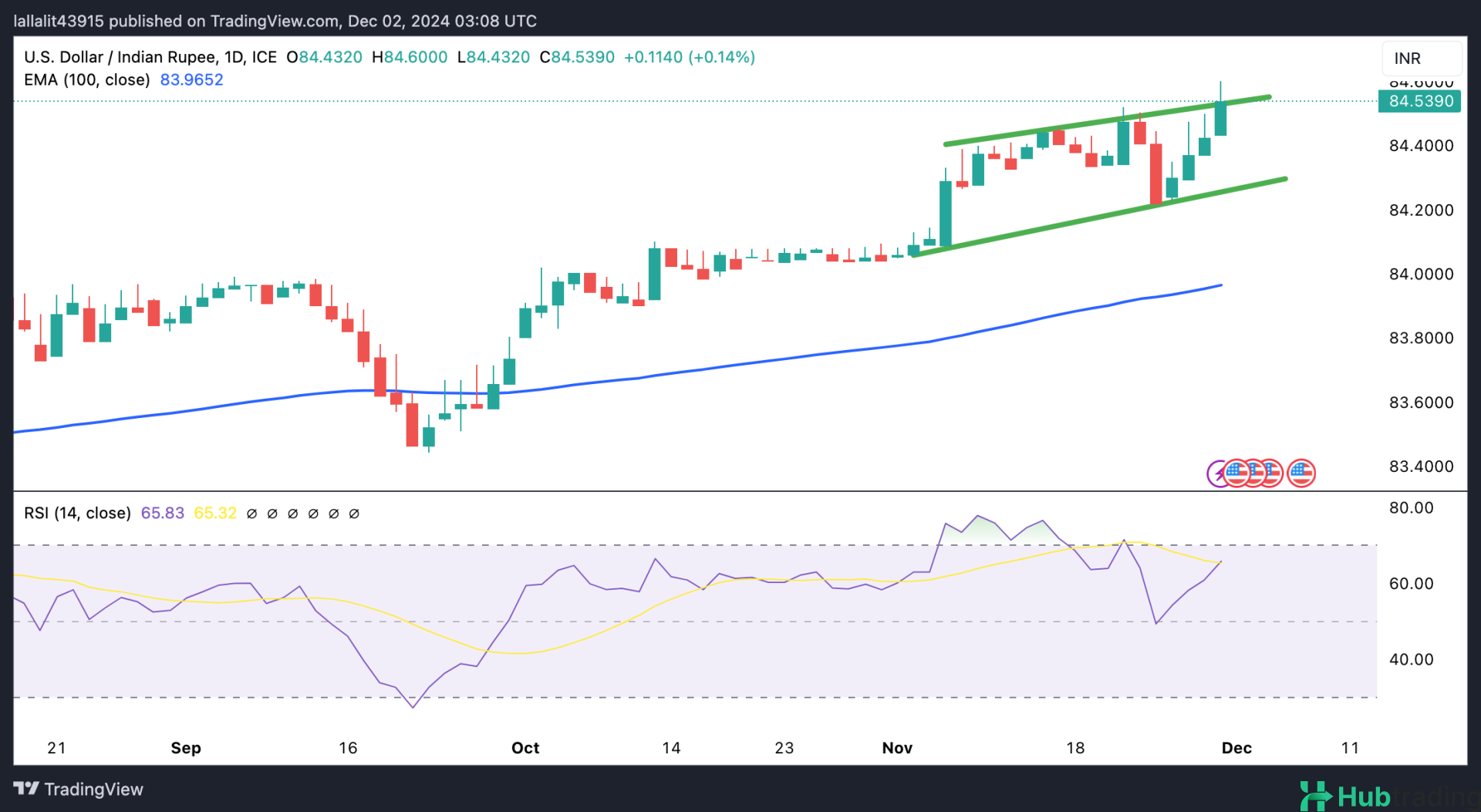- The Indian Rupee approaches a near-record low in early European trading on Monday.
- November’s HSBC Manufacturing PMI for India fell to 56.5, down from the previous 57.5, missing expectations.
- Continued portfolio outflows and weak domestic macroeconomic indicators weigh heavily on the INR.
- Investors await the release of the US ISM Manufacturing PMI, scheduled for later on Monday.
The Indian Rupee (INR) hit a fresh record low on Monday following disappointing economic data and global headwinds. The HSBC India Manufacturing Purchasing Managers’ Index (PMI) for November dropped to 56.5 from 57.5 in October, missing market expectations of 57.3. The weaker-than-expected PMI data immediately pressured the INR.
The Rupee’s decline was further exacerbated by the strengthening U.S. Dollar, driven by market reactions to Donald Trump’s recent U.S. Presidential election victory. Additionally, softer-than-expected GDP growth for the July-September quarter has raised concerns of renewed capital outflows from Indian equities, adding further strain to the currency.
Compounding the pressure, Trump has threatened 100% tariffs on BRICS nations, including India, if they proceed with developing a common currency to replace the U.S. Dollar. Despite India’s cautious approach to de-dollarisation, the U.S. recently surpassed China as India’s largest trading partner, intensifying the geopolitical tension.
Investors are now focused on the upcoming U.S. ISM Manufacturing PMI, due later Monday, and the Reserve Bank of India’s (RBI) interest rate decision on Friday. Analysts at Goldman Sachs expect the RBI to keep the repo rate and policy stance unchanged while maintaining a cautious outlook on food inflation and acknowledging slowing economic growth.
The Indian Rupee remains under pressure amid ongoing foreign fund outflows and weak GDP data:
- India’s real GDP growth fell to a seven-quarter low of 5.4% in the July-September 2024 quarter, down from 6.7% in Q1, missing the RBI’s forecast of 6.8% for Q2.
- “Despite the significant slowdown in GDP growth, we expect the RBI to maintain a pause next week due to elevated inflation and a volatile global environment,” said Upasna Bhardwaj, Chief Economist at Kotak Mahindra Bank.
- U.S. President-elect Donald Trump reiterated on Saturday that BRICS countries should continue using the U.S. Dollar as their reserve currency, warning of a 100% tariff if they back a different currency, according to the BBC.
- Foreign investors offloaded around $2.5 billion in Indian equities during November, following $11 billion in outflows in October.
- The U.S. ISM Manufacturing PMI is anticipated to rise to 47.5 in November, up from 46.5 in October.
USD/INR Sustains Long-Term Uptrend Amid Weakening Rupee
The Indian Rupee remains under pressure, with USD/INR trading higher on the day. From a technical perspective, the bullish outlook for USD/INR remains intact, as the pair continues to trade above the crucial 100-day Exponential Moving Average (EMA). The 14-day Relative Strength Index (RSI), hovering near 65.85, signals strong upward momentum, indicating that the path of least resistance remains to the upside.
A break above the ascending trend channel at 84.55 could push USD/INR toward the key psychological level of 85.00.
On the downside, a move below the lower trend channel boundary at 84.28 may trigger a decline toward 83.96, aligned with the 100-day EMA. If bearish pressure persists, the pair could target 83.65, the August 1 low.






